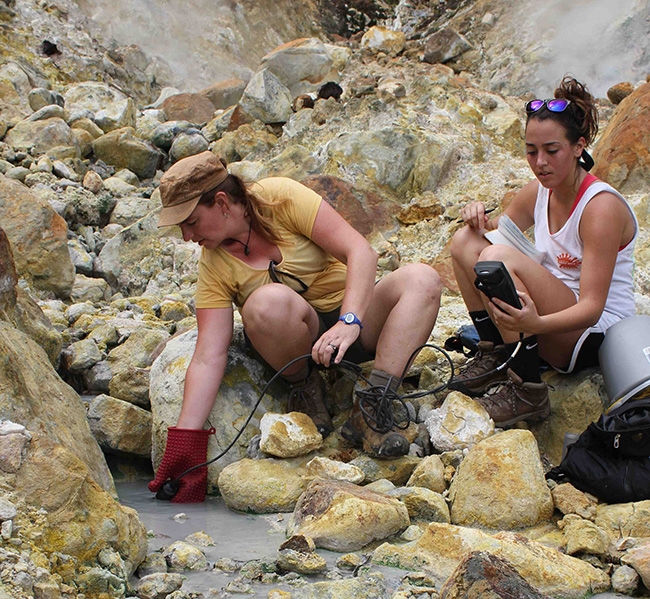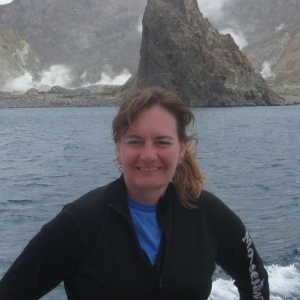Holli Frey, associate professor of geology (With Matthew Manon, visiting associate professor of geology, Union College; Erouscilla Joseph, University of the West Indies; Sarah Brehm ’15, Tara Metzger ’15, Kaitlyn Suarez ’15, Alexandra Flake ’14, Lauren Main ’14, Emily Crampe ’15, Rebecca Babiak ’16, Karyn DeFranco ’16, Sarah Kitross ’16)
If a volcano’s going to blow in the Caribbean, it’s going to blow on Dominica.
The island in the Lesser Antilles has nine potentially active—and relatively young (about 126,000 years old)—volcanoes, more than any other in the region. Combined with Dominica’s shallow seismicity (magma closer to the ground’s surface) and active geothermal areas, this suggests an active magma reservoir, and the possibility of disaster.
To determine exactly how great this possibility is, Holli Frey and her research students have been analyzing stream chemistry and determining the age of zircon in volcanic pumice and ash deposits.
If a pattern emerges—if zircons get younger from north to south, say—it would indicate a future eruption is more likely from a southern volcanic vent, Frey said. “And if streams are showing increased heavy carbon isotope values over time, that would suggest there is more CO2 in the system as a result of magma degassing.”
“The inference is that magma would therefore be closer to the surface and more prone to eruption,” she added.
And this would be troubling. Past eruptions have been catastrophic on Dominica, where most towns housing the population of 74,000 are built on ash and pumice expelled during such events.
“The largest explosive eruption in the Caribbean in the last 200,000 years is estimated to have had a magma volume of 58 cubic kilometers. For comparison, Mt. St. Helens extruded 0.25 cubic kilometers in 1980,” Frey explained. “If an explosive eruption were to occur today in the central valley, the capital city of Roseau (population 17,000) could be buried.”
Frey’s work is funded by a National Geographic Society Committee on Research and Exploration Grant.


